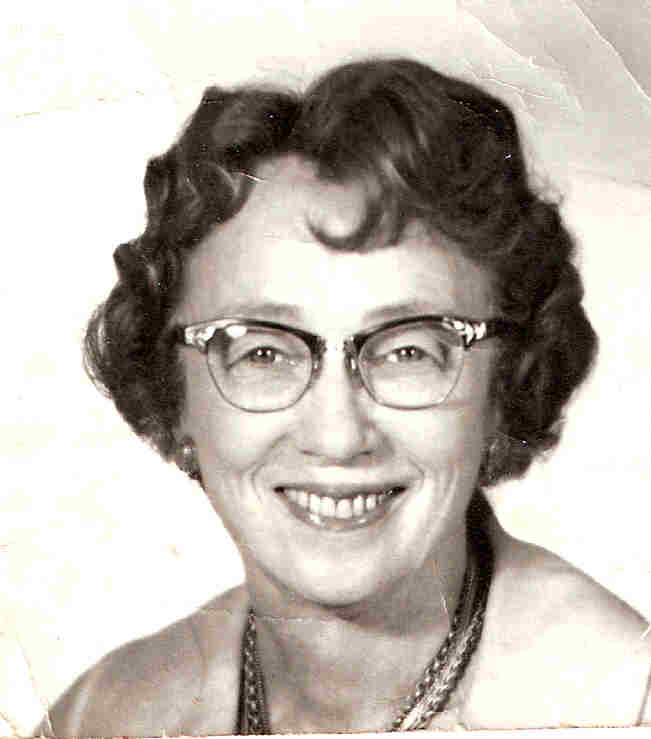
WASHINGTON COUNTY HISTORICAL SOCIETY (Washington County, Utah)
EARLY CANNON FAMILY LIFE IN ST. GEORGE
A compilation of data collected from several of Beatrice Cannon Evans's documents
John M. Cannon, the second son of Angus M. Cannon and Sarah Maria Mousley Cannon, was born on September 24, 1865 in the little three room adobe house on the northeast corner of First South and Main Street.
This small, adobe house was not the typical mud hut of the southwestern desert but a stepping stone to better things which the industrious pioneers with purpose, faith and ideals would build wherever they settled. It was not a make-shift dwelling of the incompetent. It was an achievement in the planting of a new community in which "the builder also grew." It was built with faith and high purpose in answering Pres. Brigham Young's call in 1861 to pioneer Utah's Dixie and required uprooting themselves from a comparatively comfortable state in Salt Lake City.
The Angus M. Cannon cottage had three rooms. The living room ran the length of the west side of the house. Bedrooms for each of the two wives were located on the east. The living room had an open fire place which was used for cooking, also for heating during the mild Dixie winters. There was a cellar which was so necessary in that hot climate when no refrigeration was available. There were no screens to shut out the swarming flies. Washing was done out of doors in water which was heated in a huge pot over a bonfire. The clothes were hand rubbed on a ribbed metallic wash board. Incidentally this method was still being used in St. George when I spent some months there in 1919. Even then the water was so full of silt it had to be "settled" before it could be used for any purpose.
Despite these inconveniences, the traditions of gracious living remembered by Grandma Sarah were never lost. Her table cloths might be threadbare but they were always folded after the approved manner of her mother. The house was also one of order and beauty. Flowers were a necessary part of Sarah's living. She voluntarily leveled the large family lot by moving countless loads of soil which she carried in a bucket hung by a rope slung over her slim shoulders. She weighed only ninety pounds.
The depth of the rise she made on the southwest corner of the lot can be estimated by the stone retaining wall of eighteen inches or two feet which still remains. Grandma also planted an arbor of grapes leading from the street to the south entrance of the cottage.
Her children remember the basin of water she always had ready for their grimy little feet. Inside plumbing was out of the question. Her brother-in-law, David, who lived next door east, said she was as "cheery as a little bird." Also she had a keen mind. Her children could depend on her spelling as on a dictionary. In one of Angus M.'s letters he commented that if Sarah were there his spelling would be better.
The house was set back from the street and opened on the south to a path leading to the entrance on the street. Over this path the energetic Sarah had planted a grape arbor. She told of feeding these grapes to John and of his enjoyment of them.
Sarah took an active interest in the more numerous children of her sister Amanda. She sometimes nursed Amanda's son, Lewis, at the breast. He was born soon after John. The affection between Sarah's and Amanda's children continued throughout their lives.
The older brother, George, had been born nearly four years previously on the old "camp site" east of the town while it was being laid out.
John's age would not permit him to remember this period, but Uncle George M., who was about six years old when they left there, told me he recalled sitting in the grass in front of the house as a troop of Indians, mounted on their ponies and armed with their bows and arrows, rode boldly up. They halted, stood in line as in a drill and let heir arrows fly into an even row in the grass at the edge of the lot as if to demonstrate their prowess and give a good scare to the inhabitants. They then retrieved their arrows and rode proudly on. However John was only two when the family returned to Salt Lake to live, the father being released from his mission because of the "Tropical fever" which afflicted him every summer.
Eighteen sixty five marked the beginning of the Black Hawk War which was a time of terror in many outlying places in Utah. Whenever an uprising of the Indians threatened, all available men were mustered into service to drive the Indians from the towns where they were killing or pilfering. Settlements in Kane County had been abandoned. The Indians also raided Pine Valley in Washington County, capturing a band of horses. St. George fared better than some other places.
Later in life while traveling in southern Utah, John Bennion wrote in one of his letters of the warlike Navajos and that only people of faith would pioneer there.
Beatrice Cannon Evans (1894-????) is the daughter of John Mousley Cannon & Zina Bennion Cannon. Her son, Wayne C. Evans, found these handwritten accounts in her records. They probably originated with Ann Mousley Cannon. He typed them up and provided them to the Washington County Historical Society for posting here.